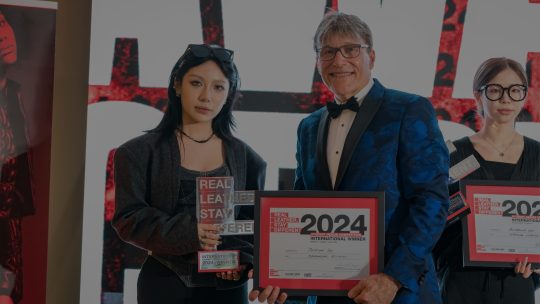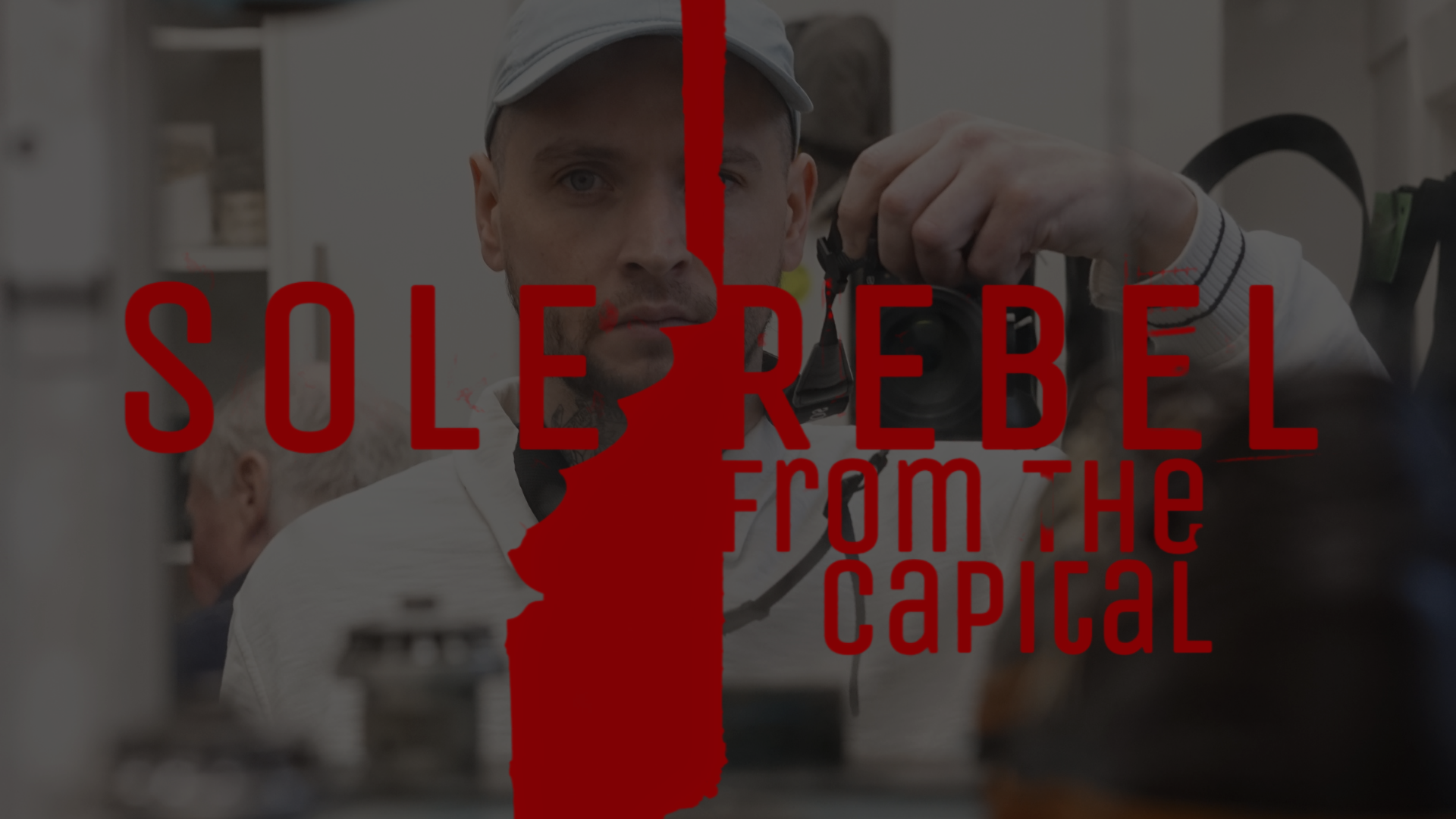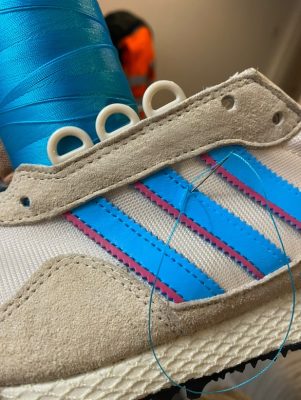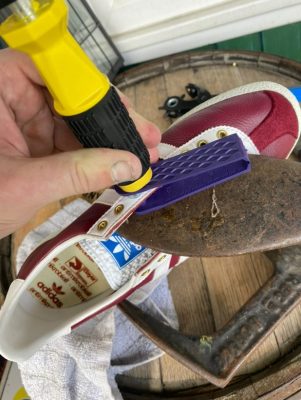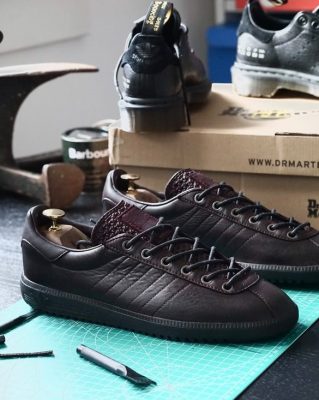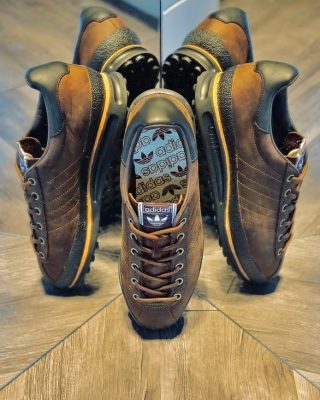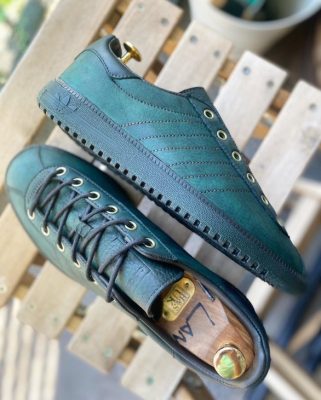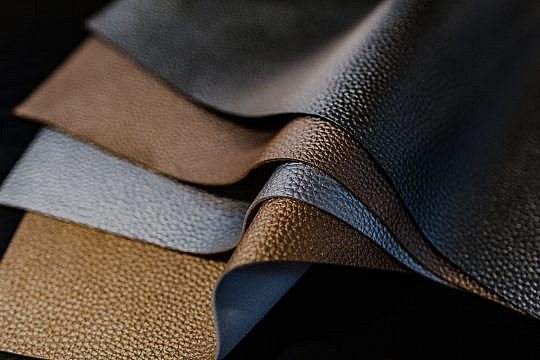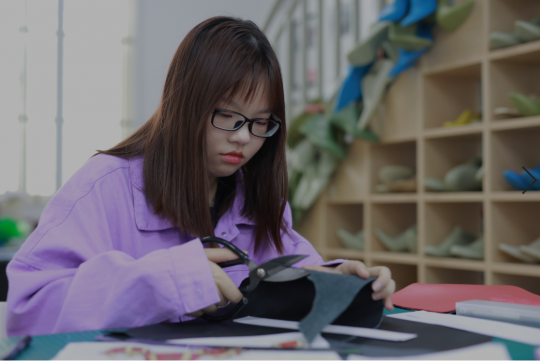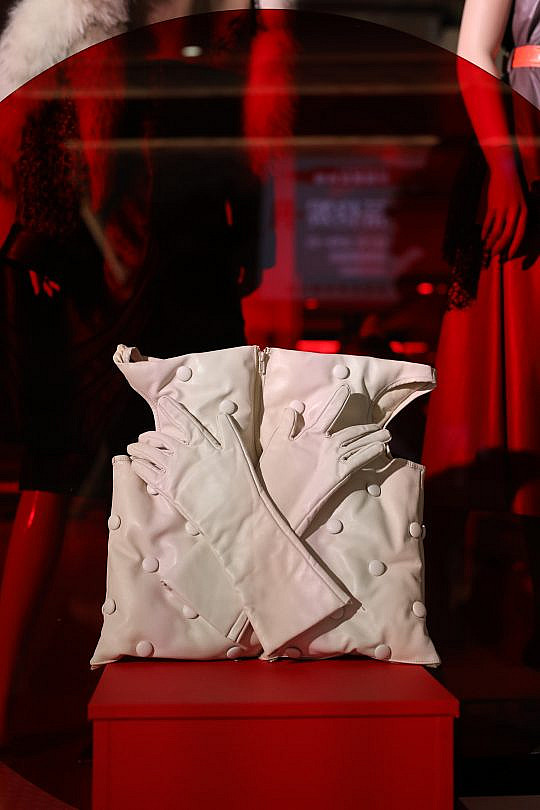SoleRebel: an RLSD interview
Based in Edinburgh, Connor is a one-man operation, working from what he jokingly describes as a “disorganised spare room.” A self-proclaimed hoarder, he collects scrap leather and old shoes, upcycling them into something fresh. From family influences to his experience working in waste-heavy industries, we spoke about what drives his work, what’s holding him back and what the future holds for Sole Rebel. Connor’s perspective has been shaped by his past and we loved diving into his vision for leather.
PAST WORK & INFLUENCES
You’ve had quite a varied career before moving into leatherwork and customisation. Can you tell us how those experiences shaped your approach to what you do now?
My approach now is just to do what I think looks nice and to learn skills that will always be useful to me whilst finding it enjoyable. Most of the skills learnt in a job setting eventually become obsolete with automation and system changes, or you inevitably become too old for manual labour. However, you’re never too old to be creative and different.
You mentioned that sustainability isn’t something you’ve actively promoted but that it’s deeply influenced your work. Can you expand on how that’s happened naturally for you?
I find more and more use for scrap materials as I expand my knowledge and skillset. I’m nowhere near an expert but I am a hoarder which helps. I’ve had shoes sitting on my shelf for months before a piece of newly learned knowledge sparks a creative idea for them and the scraps that I have scattered around my spare room. It’s also great for experimentation and trying out new ideas.
Working in Amazon customer service, house removals and as a bin man, you’ve seen firsthand how much waste is generated. How did those experiences impact your views on fashion and consumerism?
My views on fast fashion and consumerism are mostly shaped by my enthusiasm for fashion and what I’ve observed over the years. I love products that are high in quality, they’re usually limited to ensure that high standard and are preferably created by people who specialise in making what you’re buying. I feel that big companies just mass produce and create variations of similar products when they notice a trend. They’ll throw everything at it knowing there will be a lot of waste, along with the astronomical profits. The main issue is that trends always fade out, we’re left with products that nobody wants and it’s on to mass producing the next trend. I think working at Amazon, working as a bin man and working in a supermarket confirmed and strengthened what I already knew whilst also making me aware that it’s rampant in nearly every other industry.
Your time at Langley’s seems to have been a turning point. What were some of the most valuable things you learned there and how do they influence your work now?
Langley’s was definitely a turning point for me and an eye opener for what is possible. I still struggle a lot with the terminology and I’m not an expert as already mentioned but I believe my eye for quality has drastically improved since working there. I learnt how to gauge the quality of leather and suedes along with many different dyeing and restoring techniques. I found out that the construction of footwear and other leather products determined its standard of quality. Hand sewing or learning how to use a long armed Singer sewing machine has probably proven to be most beneficial to what I do now.
You collect and store leather scraps, trainer tongues and soles for future projects—what’s the creative process like when it comes to repurposing those materials?
Sometimes I’ll know exactly what scraps I’m going to use because I remember packing it away at the time and having a vague idea what it could be used for. Sometimes I’ll have to see what comes to me as I sift through and compare. Occasionally I’ll have something specific in mind and then I’ll find something more suitable whilst looking for it, it turns into something new but also means I can bank that original idea for another project.
CURRENT WORK // SOLE REBEL
You’ve got some incredible customs lined up this year, from the Adidas New York ‘Auld Reekie’ to the IRN BRU and ADHD-themed pairs. Can you tell us more about these projects and what inspired them?
They’re inspired by personal tastes and mostly where I’m from. I use my firsthand experiences as inspiration and hopefully that should resonate with likeminded people and others of different backgrounds that are interested in what I do. I have an ADHD inspired pair that is based on an extremely popular and rare pair of Adidas. My plan is to make them visually appealing first and foremost which would then assist with raising awareness.
When working with leather, what do you think sets it apart from other materials?
Leather can last lifetimes if maintained properly and it doesn’t flake or disintegrate after 5-10 years. There’s a natural almost rustic quality about leather that I can’t quite put my finger on. It feels very natural to work with it and it’s always a shame to see it go to waste.
Are there any brands, materials, or techniques you’d love to work with in the future?
Obvious brands would be Adidas and Dr Martens. I’m a product of the movements that championed and culturally cemented both brands in the UK originally. My mum is a Northern Soul DJ whilst my stepdad and his brothers were prominent Hibs casuals in the 80s and 90s. These two subcultures are intertwined with 60s Mod and Skinheads, they all evolved from each other and it’s my obsession with them that really got me hooked on the fashion and music at a very early age. I would also love to work with Nike, Puma or Diadora as they have amazing back catalogs of classic trainers that need to be brought back and or reinterpreted. Lastly I intend to learn how to make jackets and hopefully I can put together some pieces that will take inspiration from my trainer customs.
For people looking to buy or repair footwear more consciously, what advice would you give?
Learn how footwear is made, even if it’s just some basic knowledge. There’s a lot of techniques used that imitate good quality but it’s all an illusion, and they have the cheek to charge inflated prices. Also buy second hand and seek out great restorers/cobblers, there’s always something that can be done to repurpose or restore your footwear. I’m noticing a lot more people buying second hand which appears to be forcing brands to focus on quality rather than quantity, hopefully it’s a sign of good things to come.
Looking ahead, what’s next for Sole Rebel? Any upcoming projects or ideas you’re excited about?
My plans are to get through as many of my ideas as possible this year before I have to go back to regular work. I’ll never stop learning and making my creations but it’s proven to be very unpredictable as a means of income whilst having a mortgage. I’m a creative but not a businessman. I like to get the idea out there and move onto the next thing right away. It’s not great for business but I don’t have the attention span to keep doing the same designs over and over for a profit. I don’t want to be a full time customiser in that sense of the word, I just want to get my ideas out there and hopefully they’ll be used by one of the brands that I would like to work with. However, I’ll work for a while again to save up, get myself financially secure and give it another big push. I’ll keep doing that until I get somewhere.
Read the full article here.
